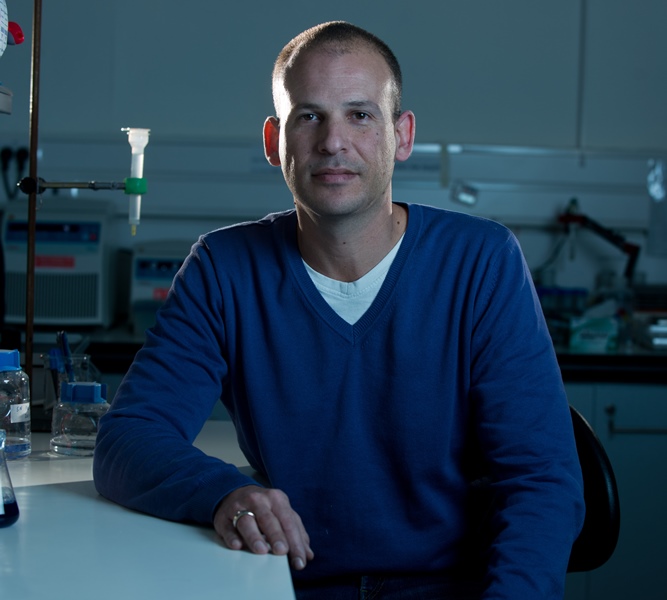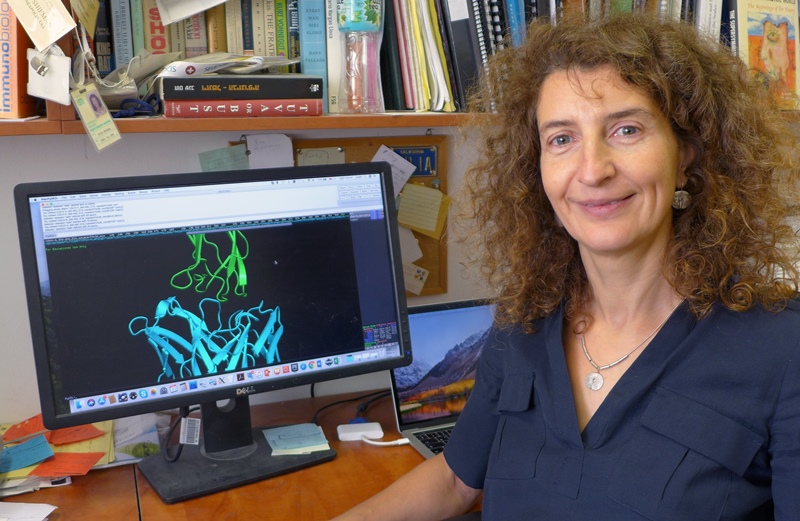
Ben-Gurion University of the Negev (BGU)'s Dr. Niv Papo (pictured above) and Hebrew University of Jerusalem (HU)'s Prof. Julia Shifman (pictured below) were facing a bottleneck in their work. As cancer researchers, they needed to understand the relationships created by cellular proteins, especially the mutations that occur when those relationships go awry.

But with thousands of potential mutations for every protein-protein interaction (PPI), the process was costly, labor-intensive and time-consuming. Existing technologies allowed scientists to observe only one mutation at a time, and each observation could take from weeks to months. As a result, researchers would spend months constructing protein mutants and measuring their effect on binding affinity (the strength with which proteins interact with their target proteins in cells), slowing down the study of how and why diseases progress.
Until now! A team headed by Papo and Shifman has developed a powerful tool to simultaneously evaluate thousands of mutations in protein-protein complexes and to map their effect on protein binding affinity, turning a years-long process into one that takes just a few days.
Their findings were published today in Nature Communications.
This development is an important step for both applied and theoretical scientists. Currently, in the pharmaceutical industry, most of the promising new drugs in production are proteins that destroy certain disease-associated protein-protein interactions. The new method of quantifying the effect of thousands of mutations allows researchers to design protein drugs that are both potent and specific, causing minimal side effects.
“Just like people, proteins maintain 'social networks'" says Hebrew University's Prof. Shifman. “Some 'couples' partner for the long-term, while others prefer numerous and promiscuous interactions. When the proteins act the way they are supposed to, the body is healthy. But when the binding affinity becomes affected – that is, when stable relationships break up too quickly, or fleeting ones fail to disengage – that's when disease happens."
For theoretical biologists, too, understanding mutations in protein complexes and the impact mutations have on binding affinity is an important key to understanding a protein's behavior. Even minor alterations in a protein's binding affinity can have serious implications: A change in just one PPI could translate into a remodeling of the whole protein network. That, in turn, frequently leads to dysregulation of the network.
To streamline the process of mapping and cataloging the reactions, the researchers combined a sophisticated protein library screening technology, deep sequencing and data normalization to identify and categorize protein mutations according to their function.
“Our new approach will increase the understanding of the mechanisms and evolutionary origins of specific PPIs and facilitate the rational design of specific inhibitors that can discriminate between structurally similar protein targets. Indeed, as many disease-related proteins belong to large families of related proteins, increasing target selectivity is a highly desirable but challenging goal in drug development. Our new approach thus offers great promise for designing novel target-specific therapeutics," said Ben-Gurion University's Dr. Papo.
Dr. Papo is a member of the Avram and Stella Goldstein-Goren Department of Biotechnology Engineering and the National Institute for Biotechnology in the Negev (NIBN) at BGU. Prof. Shifman is a member of the Department of Biological Chemistry in The Alexander Silberman Institute of Life Sciences at HU.
This work was supported by an Israel Science Foundation (ISF) grant and European Research Council (ERC) grant to Niv Papo and by an ISF grant to Julia Shifman.
CITATION: Generating quantitative binding landscapes through fractional binding selections, deep sequencing and data normalization. Michael Heyne, Niv Papo, and Julia Shifman. Nature Communications – Published January 15, 2020. DOI: 10.1038/s41467-019-13895-8
Media Coverage:
JPost
Times of Israel